Professor Pallabi Chakravorty of the Swarthmore Music and DanceDepartment has had a busy year. Despite her abrupt sabbatical due to a back injury, Professor Chakravorty has published two books within the past year that she has been working for close to a decade: This is How We DanceNow! Performance in the Age of Bollywood and Reality Shows, published in October of 2017, and Dance Matters Too: Memories, Markets, Identities, which was published in India this past March and is forthcoming in the United States.
Dance Matters Too was inspired by a conference Professor Chakravorty attended that sparked conversations about the nature of classical Indian performance in the face of contemporary global changes. People from all over the world interested in classical Indian dance gathered at this international conference to address their diverse experiences in the field, and when Professor Chakravorty and her co-editor Nilanjana Gupta sent out calls for papers, they were surprised by the influx of articles from scholars anddancers all over the world.
The book is divided into sections loosely separated by historical significance. The first looks at the history of the style itself and what remains of classical Indian dance now. The second part looks at the current influence and fusion of popular culture on Indian dance. It investigates the role of globalization ofdance alongside shifting ideas of Indian national identity. The final section deals with the creation of subnational identity through the development of regional styles of classical Indian dance.
When asked what inspired her to do the research for her article, titled “Cosmopolitan Then and Cosmopolitan Now: Rabindranrtiya Meets DanceReality Shows,” in Dance Matters Too, she referenced her own experiences as a Kathak-trained dancer.
“I became very interested in challenging myself. I have a certain mindset about aesthetics. We develop strong tastes and preferences as dancers if you are trained in certain ways…so it creates a mindset and I wanted to challenge that. I’ve always been very fond of Bombay films, which after the 1980s, after liberalization, became Bollywood. It is much more global and spectacle-oriented, prior to [Bombay films] that were more classically oriented and had folk forms.”
Professor Chakravorty’s fieldwork for This is How We Dance Now, which she also used for her article in Dance Matters Too, has taken her to the sets of Bollywood films to work and dance alongside young Bollywood dancers. “It was a challenge. What I first learned was I am not a Bollywood dancer…After being exposed to that kind of movement and energy, high energy movement that is not line oriented but spectacle oriented, I thought there’s something there. These people are enjoying [what they’re doing]. Through these interactions, I saw how versatile they were, how fabulous they are asdancers. It’s a different kind of dance and I have tremendous respect for what they’re doing.”
Once her most recently published book, Dance Matters Too, is available in the United States, Professor Chakravorty hopes to see forums for writers anddancers to write about dance, giving more visibility and accessibility to dancestudies and dance scholarship.
“I want more people to do dance research in different venues, so that writing becomes a part of the culture of dance, to think about dance not in isolation, that it’s this esoteric world, but that dance is connected to other things.Dance is first and foremost culture…so [I want people] to understand how it is part of culture and why it changes, how it is dynamic and cross-cultural, and to make people competent in cross-cultural understanding.”
Dance Matters Too: Memories, Markets, Identities contributes to these forums and will offer insight on the ever-shifting nature of Indian dance in an increasingly global world, providing its readers with compelling reasons for the continued study and appreciation for a variety of dance forms.
Marion Kudla ’19

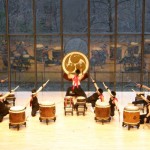
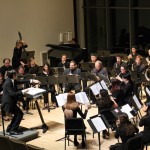


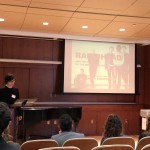
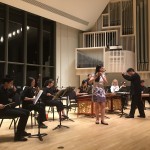
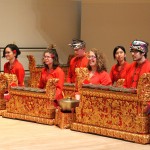

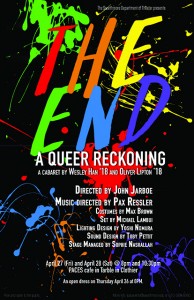 THE APOCALYPSE IS NIGH.
THE APOCALYPSE IS NIGH. 